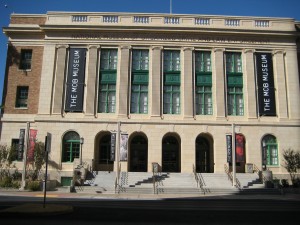Two things collided in my head last week. After I picked up the wreckage, I thought there might be a worthy blog post in the aftermath.
(Picking up the wreckage took a while, because the week was so busy. At least nobody took part of a locomotive through the eye. Anyway, I apologize if this is old news.)
Thing one: Andrew Huang’s post on the $12 Gongkai phone (by way of LWN). It doesn’t come as any great shock to me that cellphone hardware has become cheap: at last year’s DEFCON, the Ninja Networks party invitations were fully functional cellphones. (I do not know what the Ninja Networks cost per phone was: as I recall, the Ninjas stated they got substantial financial and technical support from Qualcomm. However, the fact that the phones were cheap enough to pass out as party invites is significant in and of itself, in my ever so humble opinion.)
Thing two: Dr. Richard Stallman and his position on cell phones. I don’t want to reopen the whole debate on whether Stallman is a hypocrite for not having a cell phone but being willing to use other people’s phones. Rather, I want to ask a not-so-simple simple question: is it possible to build a phone that overcomes Stallman’s objections?
…most of them are computers with nonfree software installed. Even if they don’t allow the user to replace the software, someone else can replace it remotely. Since the software can be changed, we cannot regard it as equivalent to a circuit. A machine that allows installation of software is a computer, and computers should run free software.
Well, it looks like we can put together a cellphone computer for about $12. Maybe less. I don’t see any reason to think that someone (more likely, a small group of someones) could put together a reference hardware spec for an open cellphone, complete with schematics, PCB layouts, and a parts list. I know I don’t have the skills or equipment to do SMD soldering, and I wouldn’t ask, say, my mother to build a phone from a kit either. But it is just as easy for me to visualize a scenario where some organization (say, the FSF) contracts with a manufacturer to build phones from the reference design, with an organizational seal of approval. They could sell the phones outright, or offer them as a premium for donations: I think I’d give at least $50 to FSF for a phone like the one Huang describes. Add WiFi, GPS, a color screen and a camera and I’d go up to $100, possibly more depending on my mood, the phase of the moon, and other factors.
But we need an operating system for our cellphone computer, right? Right. Android is open source. Note well, however, that there is a difference between “free software” and “open source software”, and that these are not equivalent concepts. But it seems pretty easy to imagine (as long as were are imagining) a fork of Android that is truly “free” by the FSF definition. As a matter of fact, we don’t even have to imagine; while I was researching this post, I stumbled across Replicant, which is exactly that.
…tracking and surveillance devices. They all enable the phone system to record where the user goes, and many (perhaps all) can be remotely converted into listening devices.
I’ll deal with the second objection first. With a truly open source and free OS, I think you can pretty much eliminate the capacity for remote bugging. As to the first objection, I don’t see a way around that. It seems pretty clear that the phone system has to know where your phone is for you to make calls and get calls. But: if the system only stores that information for the minimum necessary length of time, and discards it after the call is completed, is that good enough for Stallman?
(Even if you’re not actively engaged in a call, I think the network still has to know what cell you’re in. But could the network only store your current cell, and not the history of cells you’ve been through?)
(From this point forward, I’m going to refer to this idea as the “open” network. Calling it the “free” network carries with it the connotation that people aren’t paying for it. I’ll come back to that.)
Okay. So we expect AT&T and Sprint and Verizon and T-Mobile and the Grace L. Ferguson Cell Phone and Storm Door Company not to store this information. Right. I’ll wait for you to finish laughing.
Done? Okay. So we not only need consumer hardware, we need an entire “open” cell phone network. Is that something that could be reasonably built? Well, we need radio spectrum. It is unlikely that the carriers will give up spectrum for an “open” network. So what do we do? Could we use amateur radio frequencies, like the 2390-2450 MHz band? Is it even possible that local amateur radio groups could set up and maintain cells in their local areas? (I don’t imagine the equipment to set up a cell is cheap, but I also don’t imagine it is beyond the reach of a group of talented amateur radio operators with a GNU software radio. And if the equipment becomes widespread, the prices should go down. I hope.)
Could you even do away completely with the cell network, and just run all the communications over IP? You’d need to be associated with an access point, but aren’t most folks near one at home or at work most of the day? Would it be possible for amateur radio operators to set up networks of access points along major urban corridors? WiFi hardware is even more of a commodity item than cell hardware, and there are protocols for linking access points together or doing mesh networks.
Someone has to pay for this, right? Right. We don’t want movements and activity tracked, but I don’t see any philosophical problem with a simple lookup based on each phone’s unique identifier. All you need is one bit to indicate the customer is paid up and entitled to use the network. As for the actual cost and billing, it seems to me that can be handled by systems outside the network. If you’re giving unlimited everything for one flat fee, you don’t need to track anything except paid or unpaid. If you want to start getting into per voice minute or per KB data charges, it seems to me that you can still track usage (minutes, KB, or texts) without tracking activity and bill based on usage. The money from service fees could, in turn, be routed to the cell providers. I’m sure we could come up with a fair way of doing this; for example, X cents per call routed through an individual cell. Busier cells get more money, which they can invest in upgrading service; more remote cells probably have lower demand, and don’t need the same capacity.
(One big problem if you’re using amateur radio frequencies: FCC regulations prohibit “communications in which the operator has a pecuniary interest, including communications on behalf of an employer“. There’s a strong tradition, in addition to the FCC regulations, against using the amateur radio bands for business purposes. One could argue that this kind of network wouldn’t be a business, though; rather, it would be a maintained as a public service, and the money that comes in would go back out to local amateur organizations to cover their cost of maintaining cells. I sort of see this in the same way as I do the repeaters maintained by some amateur radio clubs for the use of their members.)
So I said this was a not-so-simple simple question. Basically, what I don’t know about cell phones and cell technology could fill books. (Indeed, it has filled books, which are located in places called “bookstores” and “libraries”. But I digress.) I think I’ve outlined a possible path to an “open” network, but I acknowledge the limits of what I know. I would welcome criticism from people who know more than I do: those who work in the industry, computer security experts, and heck, even cyberpunk writers.
I mention cyberpunk writers for a reason. Maybe I am over-romanticizing this a bit, but I have this mental image of guys in the Sprawl with “open” cellphones spread out on blankets in the street, and gangs like the Panther Moderns using those phones. A guy can dream, can’t he?
(Subject line hattip: the greatest rock song ever, by the greatest band ever. Like you needed it anyway.)
Edited to add: I knew there was something I was forgetting. How reliable would this network be? After all, AT&T spends hundreds of millions of dollars a year on their network, where what I’m talking about here is something that is, at best, a fringe network primarily used by people highly concerned with privacy, and possibly maintained by amateurs on a spare time basis. On the other hand, AT&T spends hundreds of millions of dollars a year on their network. Enough said.
My inclination is to say that you could probably build something that’s “good enough”. You might not be able to get to the same level of service as, say, Verizon, but you could probably get to a level of service where people are willing to make the tradeoff between guaranteed privacy and a small amount of inconvenience. I think this is one place where my plan is weak.
Edited to add 2: 1500 words? I haven’t written like this since I was in college. In other words, last year.



